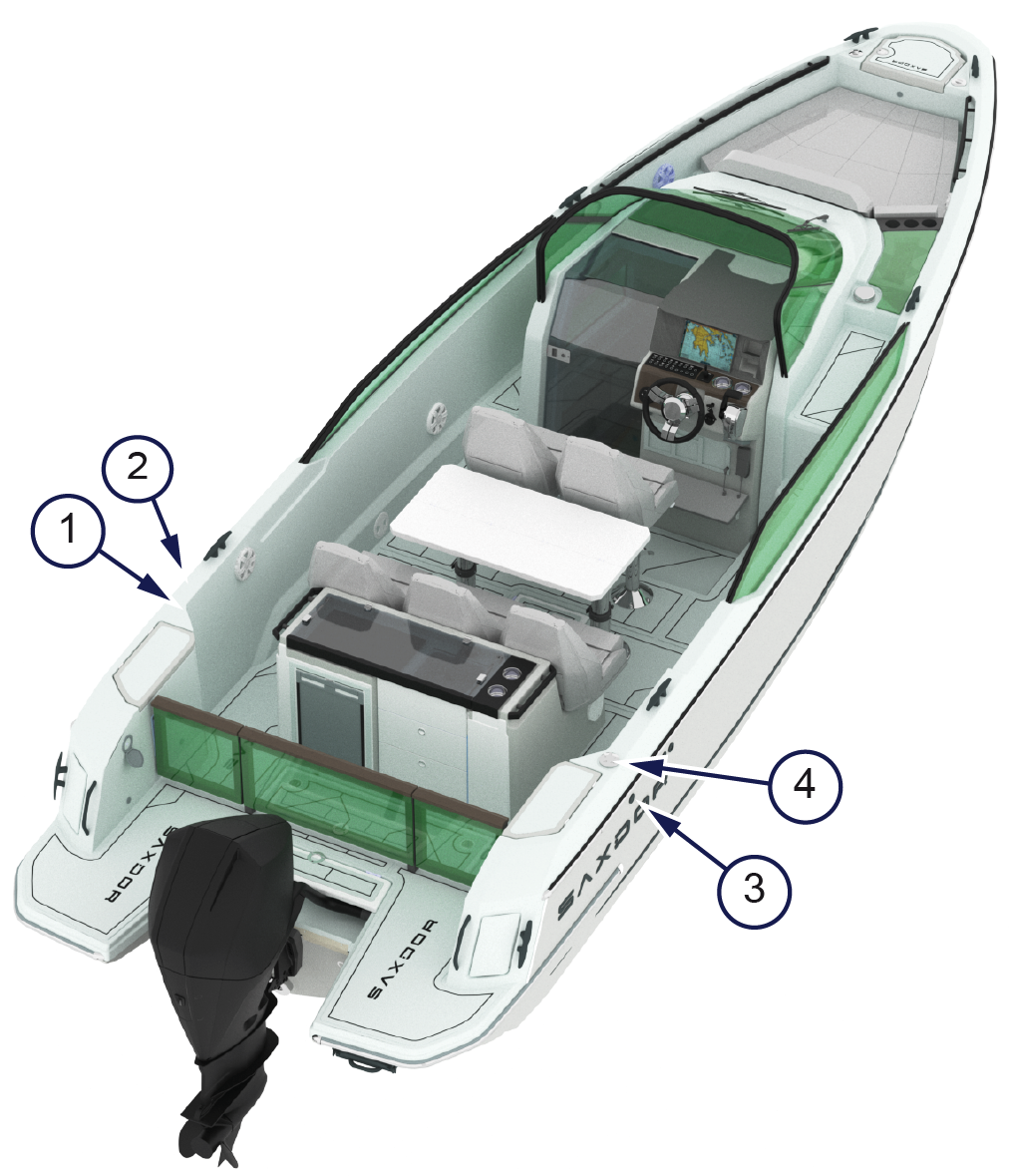5.3 Fuel system
Your boat’s engines run on gasoline. The optional heater system is powered by diesel fuel.
Hot engine parts could cause a fire if in contact with flammable materials.
Store equipment that contains gasoline only in compartments designed for this purpose.
Gasoline fuel system installed on your boats is designed to meet EPA regulations. The system prevents spit back when filling the tank and lowers the evaporative emissions through the tank and vent. The fuel system contains gasoline fumes detector system, fuel tank, fuel tank vent lines, fuel tank fill line and fuel feed lines.

1 | Diesel fuel filling inlet | 3 | Gasoline tank ventilation opening |
2 | Diesel tank ventilation opening | 4 | Gasoline fuel filling inlet |
You can monitor the gasoline fuel level in the tank on the chartplotter display. Always use high-quality gasoline that meets the requirements stated in the engine manufacturer’s manual.
Risk of fire, explosion or material damage.
Avoid damaging the fuel lines on your boat. Pay attention to the location and condition of the fuel lines.
Check the engine and heater manufacturer’s manuals for more information on:
Instructions for use and care
Detailed refueling instructions
Suitable fuel types
Your boat may be equipped with gasoline fumes detector. The display unit of the system is installed near the helm. When gasoline fumes appear, red led light will occur and audible alarm will sound. In the event of alarm, immediately have all passengers exit cabins and boat if possible. Ventilate the bilge and carefully check all fuel lines and other potential sources of gasoline fume leaks. If leaks are identified shut off the fuel supply and make necessary repairs.
The gasoline fumes detector system should be tested periodically according to the manufacturer’s recommendations. It is recommended to replace the gasoline fume sensors every three to four years.
Aluminum fuel tank is installed in dedicated ventilated compartment.
Fuel fill deck fitting is marked GAS and allows refueling tank.
Fuel tank vent allows vapors to vent from tank during thermal expansion of fuel and while refueling. It allows fresh air flow into the tank during thermal contraction of fuel and when engine(s) are running. The vent prevents water from passing into fuel system.
Fuel tank ventilation line is equipped with carbon canister that absorbs hydrocarbons.
Your boat’s fuel system is equipped with fuel filter(s). Filters can be located in fuel feed line or as a part of engine set. Fuel filter(s) protect the engines from debris.
The fuel tank’s fuel intake is routed to the engine(s). There are manual valves for each fuel line. The manual fuel valves should be open during normal operation. In case of emergency or during storage, the valves should be closed.
- How to minimize risk of fire: Don't play with fire